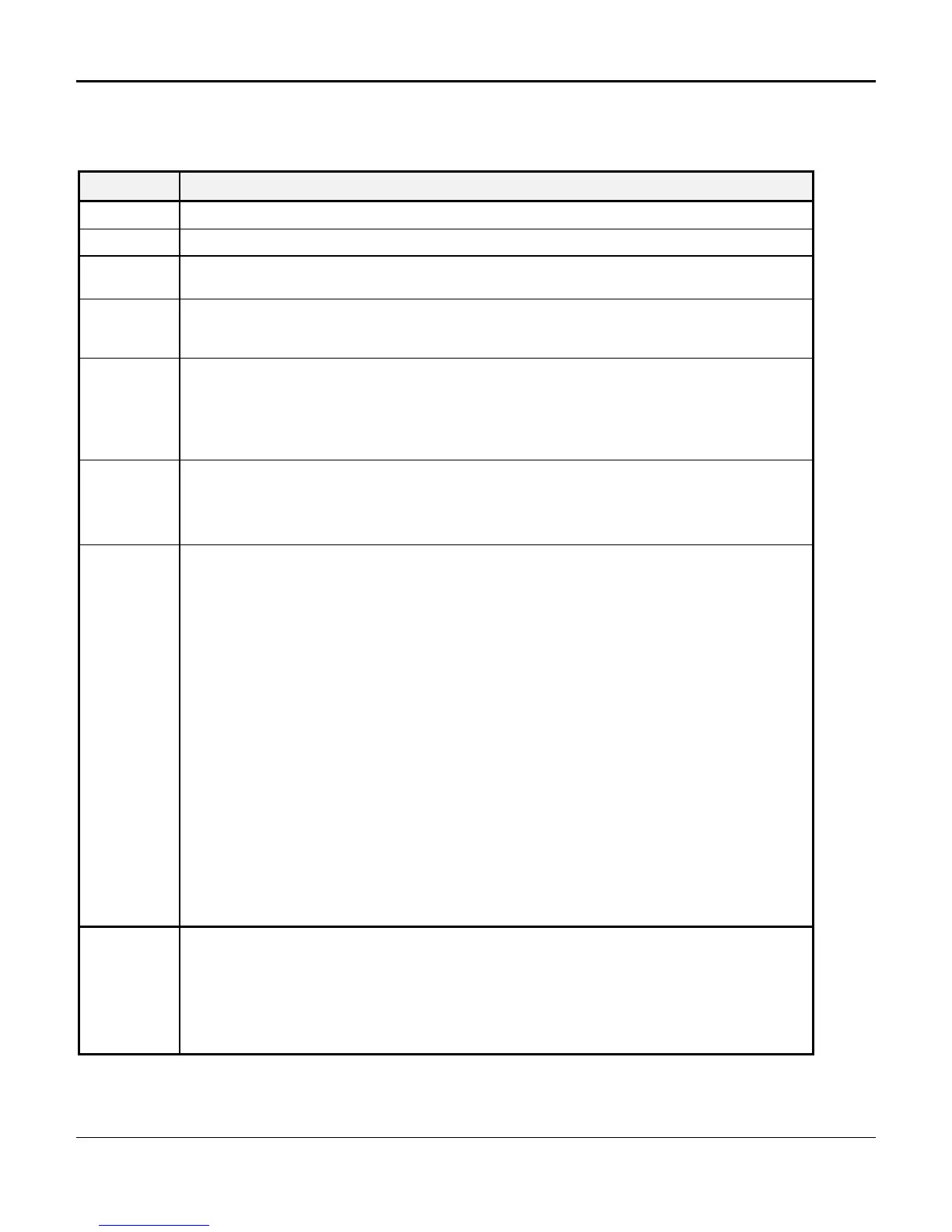D/I Mux III User’s Manual Appendix G. Modem Interfaces
248
Table I-2 lists and describes the Hayes Smartmodem 300 commands.
Table H-2. Hayes Smartmodem 300 Command Set
Command Description
AT Attention prefix; precedes all commands, except escape sequence and the repeat command (A/).
A/
Repeat last command.
+++
Escape sequence: Go to command state if in on-line state. The escape character is stored in S-
register 2. It is '+' (ASCII value 0x2B) by default.
A
Go to answer mode. Attempt to go into on-line state.
The modem powers up in originate mode (i.e., ready to place a call). The modem can also operate
in answer mode by entering ATA.
C0
C1
Carrier signal off until C1 or Z is issued.
Carrier signal on; restores automatic carrier signal on/off switching; carrier signal remains on when
modem originates or answers a call, or is connected to another modem.
The modem controls the carrier by default (state C1). This command was discontinued with the
Smartmodem 2400 and C1 factory set.
E0
E1
Disable character echo in command state.
Enable character echo in command state.
The default state is E1 but the state of this setting is set by a switch. Software should set the value
of this parameter during modem initialization.
D
0-9#*ABCD
P
T
,
R
;
Go into originate mode; dial number that follows to go on-line.
This is one of the most frequently used modem commands. A typical command sequence to make
the modem dial might be ATDT-123-4567. This command sequence makes use of one of the dial
modifiers available with the dial command, and indicates that hyphens (0x2D) and spaces (0x20)
are legal and ignored in the dialing sequence. The dial modifiers permitted are listed below.
Digits/characters for display.
Pulse dial.
Tone dial.
Delay processing of next character.
Delay value is stored in S-register 8 and calibrated in seconds. Default is 2 seconds. The main use
of this feature is to impose delays required by PBX systems.
Reverse mode (to originate a call in answer mode);
This command causes the modem to use answer tones when a call is originated, enabling the
modem to establish a link with a modem that cannot use answer tones.
Return to command state after dialing.
This feature allows the modem to send number tones without attempting to establish a link (e.g. in
response to voice mail requests or as a password to access an on-line service).
F0
F1
Enable character echo in on-line state.
Disable character echo in on-line state.
Similar to the preceding command but applies when the modem is on-line. The default is F1.
Under most conditions, transmitted characters are expected to be echoed by the remote system,
and F1 is the desired setting . Software should explicitly set the value of this parameter during
modem initialization.
